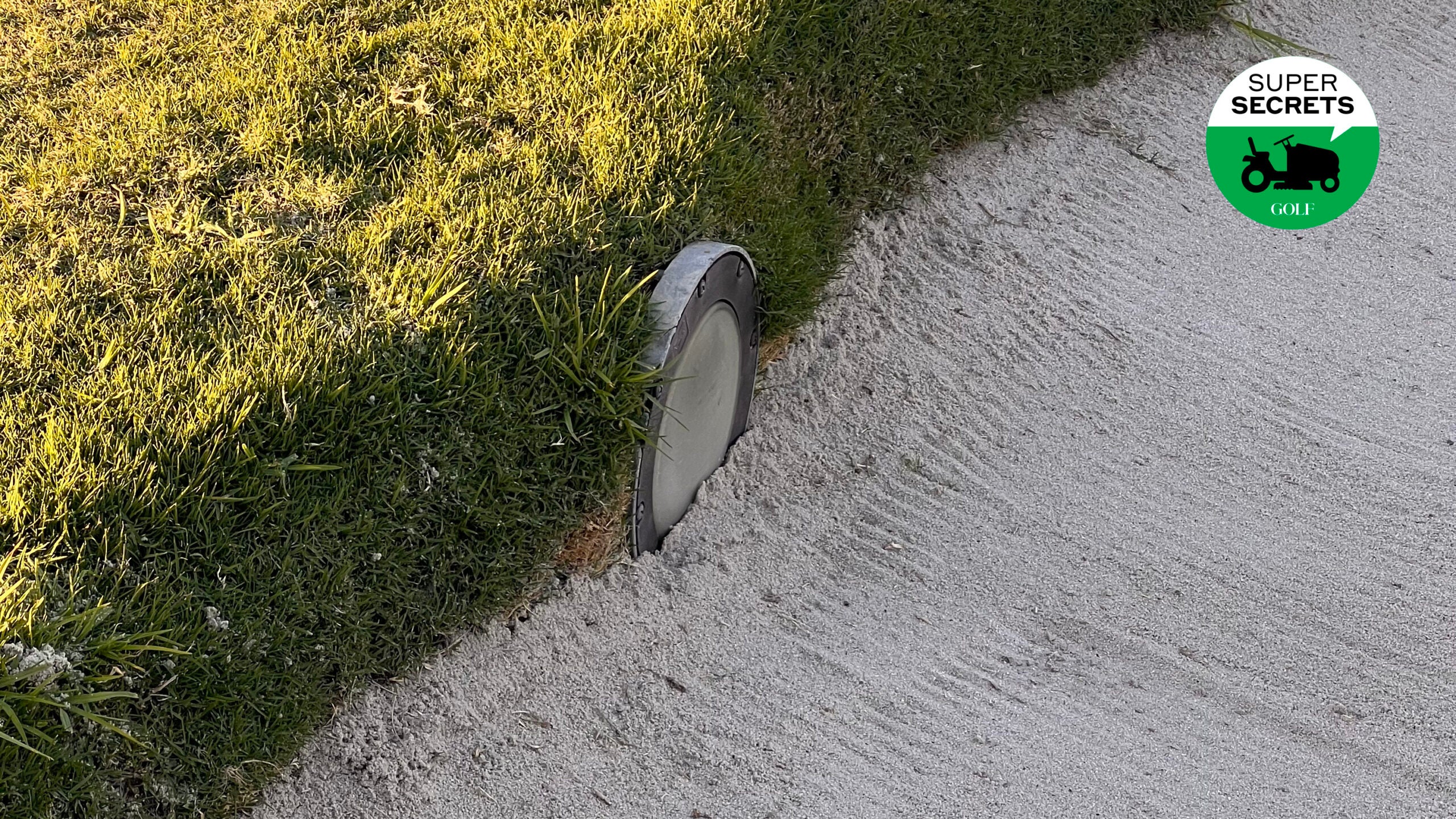No one plays night golf at Riviera Country Club, host of this week’s Genesis Invitational.
But if push came to shove, Tiger Woods and Co. could peg it after dark on Riviera’s most famous hole: the short par-4 10th.
A reliable foil to the world’s best players and a source of fascination for architecture geeks, the 10th is best-known for its beguiling thumbprint green, a drivable but defiant target.
But these days the hole boasts another feature that it didn’t have when George C. Thomas designed it nearly a century ago.
Look closely and you’ll see them: arrayed around the edge of the 10th’s largest fairway bunker is a series of circular lights, like the kind you might see in a trendy kitchen remodel.
Their purpose?
With all the goings-on at Riviera this week, course superintendent Marshall Dick was not available for comment. But a club insider tells Super Secrets that the lights were installed some three decades ago for aesthetic reasons: to illuminate a beautiful hole at night, making it visible from the hilltop clubhouse. A visual perk for members and their guests.
Because course work often happens before dawn and after dusk, it seems reasonable to wonder whether those lights might also serve as a visual aid for maintenance staffers, as they groom in and around the bunker after dark.
But Mark Patterson, a veteran Florida-based superintendent who consults on golf-course projects in multiple states, says that’s almost certainly not the case. If anything, those bunkers lights would be a nighttime distraction to maintenance crews.
“Those [workers] wear headlamps and have headlights on their machines,” Patterson says. “That’s what you want. Lights pointing away from you. Lights pointing at you only create glare.”
In golf, illuminated venues are nothing new, of course. Night golf is played around the world. Lights also come in handy for television coverage. During Masters week, for instance, evening TV segments are often shot against the backdrop of a partly illuminated Augusta National. But those lights are portable, not permanent installations.
Across the industry, though, LED lights — sleeker, more contemporary versions of those at Riviera — are increasingly common, Patterson says, in large part because their designs have become more affordable and discreet. Patterson says that they’re easy to install and run about $20 a piece.
Often, he says, the lights are used to illuminate putting greens. But in his own projects, Patterson says he’s also used them as advertising.
“At one of my properties, we put them in so people driving by could see us,” he says. “A lot of folks would come in by day and say, ‘I didn’t even know you were here until I saw the lights last night.’”
At Riviera, though, the motivations are different. And this week, in particular, marketing isn’t something the club needs.
